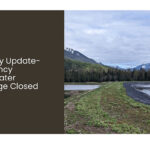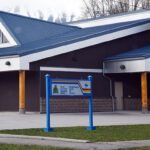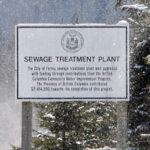Home »

Wasa area ESA hearing Aug. 22
Regional District of East Kootenay (RDEK) board of directors are considering amending the Wasa and Area Official Community Plan (OCP) to include development permits for environmentally sensitive areas (ESA).
The purpose of this development permit is the protection of the natural environment, its ecosystem and biological diversity, the RDEK noted.
A public hearing for Bylaw No. 2633 is Wednesday, August 22 at 7 p.m. at the Wasa Community Hall.
Area resident Cori Barraclough appeared before the board of directors August 3 to register ongoing concerns about the process.
“The mapping remains at a gross level and is not ground-truthed. It does not clearly define the environmentally sensitive areas as “assessment areas” which have buffers of unknown quality around them, rather it presents them as defined polygons of environmental sensitivity,” she noted.
“Furthermore, the riparian polygons do not match the definition in the bylaw. Since this bylaw will form part of the OCP, is a formal OCP amendment process needed to amend the map? If so, would this require the usual steps of advertising, public hearing, etc. to correct or update mapping? How frequently will this be done, on an as-needed basis or annually as some municipalities do?” Barraclough asked.
“I suggest that either the mapping be changed to match the definitions, or that the legend on the map be changed to clearly indicate ‘riparian and wetland assessment area,’ ‘grassland assessment area’ and ‘species at risk habitat assessment area.’
RDEK planner Michele Bates reported that “due to limited resources at the time of the planning process, mapping was unavailable for wetland and riparian ecosystems and connectivity corridors for the entire plan area, as well as grassland, old growth forest and habitat for species at risk ecosystems. Recognizing the importance of these values, obtaining funding or in-kind support to map these areas and to amend the OCP to include these values in the Development Permit section is supported.”
Poor communication about this process is another bone of contention for area residents.
“The way this process has gone about has left a bad taste in residents’ mouths. Please take that into account,” said Karen Barraclough August 3.
RDEK planning staff report efforts have been made to reach out to the public.
“An open house was held on March 29 with approximately 77 people in attendance. Staff presented an overview of Bylaw No. 2633, as well as a summary of Lotic Environmental March presentation to board,” stated Bates.
“The concerns heard at this meeting were similar to comments heard from previous consultation in this plan area. Property owners stated they do not feel any more legislation is required as the province already has environmental regulations and that the riparian mapping is not scientific and should be “ground-truthed.” The bylaw has been amended to clarify old-growth forests and grasslands as requested at the March 29 meeting and to address specific exemptions for a resident to maintain diking systems on his property.”
What the RDEK is proposing for the Wasa area is consistent with what it has done elsewhere, Bates said.
“Since 2008, the regional district has implemented Environmentally Sensitive Area Development Permits (ESA DPs) in eight Official Community Plans (OCPs). In the past 10 years, 56 ESA DPs have been issued. Of the 56, six applications required a report from a Qualified Environmental Practitioner (QEP). The six applications were major in scope or potentially posed a significant impact on an ESA value,” she outlined in a report to the board.
“The ESA DPs proposed are consistent with other OCPs in the regional district. A QEP mapped the riparian areas using aerial photography, which is suitable for this application as the mapping is driven by river function and not present conditions. The riparian mapping also agrees with provincial methods.
Since January 1, 2016 the regional district has received 47 building permits within the Wasa and Area OCP area. Had DPs been adopted at that time, 10 of those properties would be within the proposed ESA DP areas. Taking into account the exemption policies within the OCP, of the ten properties, three would have required an ESA DP. The intention of Development Permits is not to prohibit development but is a check and balance mechanism to mitigate impact on the environmental values in the plan area,” Bates said in an analysis.
e-KNOW







